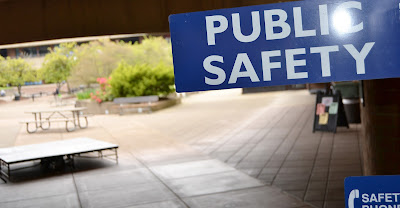Book Report on "It's What I Do"
Lynsey Addario Book Report
After reading Lynsey Addario’s book, “It’s what I do,” I could see just a taste of how much Addario treasures her work as a journalist. A person that risks their life in order to get some pictures of citizens in a war zone is either crazy or very motivated to get the pictures they want. Her main purpose for going into a war zone was to capture the moments of citizen casualties in foreign land and the change of peoples’ balance of life. Looking at her photos, it looks like she took lots of overall pictures to show terrain, crowds, and to help give perspective. She takes a variety of environmental portraits to show more detail on specific peoples’ lives. An example of her reporting civilian casualties, on page 143, there is a picture of the British Consulate very soon after it was bombed, killing over 30 people including the Consul General. There are more images regarding civilians being injured during the war on page 132, where there was a man that was badly hurt after stepping on an explosive in Iraq. With as much as she was around livefire for such a long duration, there is no way I could have learned how to give so much effort and persistence into her task of covering war/wars in 3rd world countries. Things like chapter 9, when her and her friend Elizabeth are in Afghanistan and they are hiding that Elizabeth is pregnant, during Operation Rock Avalanche, in order for them to keep photographing.
The way she takes pictures is different from others, because it seems like she talks to the people to get their permission, and then she keeps shooting til they do not really care that Addario is there. Making them act like their normal self. As for the pictures while chaos is going on, she does not have the people stop and pose. A trend throughout her photos, looks like she does not get the person’s attention before taking the shot. I say this because of all people in the pictures, about 90 percent of the people are actually looking at the camera, and those are mostly portraits.
A lesson I learned after starting to take pictures this term, which Addario experienced with her photos of war is that, even though you took a bunch of pictures and ones you thought were pretty good, the editors of the paper do not always want each picture you bring them. Because it was too blurry, too far away, not the right angle, or it was just a bad picture altogether. Addario’s book talks about a picture she submitted to the Times, but they would not run online it because the editor thought it to be too controversial (pg 244-245). It was largely of a civilian boy that got injured by a bomb. She was not very happy about the paper not showing the pictures that she had worked so hard to get. She later wrote an e-mail to the editor in chief to convince him to run the picture. He did not run the picture of the boy, but he ran other pictures in a slideshow.
Here are some of my favorite examples of her work: This is one of my favorites from when she was in the Korengal Valley. Because it shows the connection the soldiers have with one another, treating each other like brothers. This is a shocking pictures because it shows what goes on during war, people die, smoke fills the air, people get irritated and sad because they lost one of their own, and everyone tries to protect each other(man in the background with his gun up, following).
Another one of my favorites is the picture of a missle being launched from a truck in a field because I really like shooting guns and watching bombs being fired. I especially like that with everything in focus, you can see the round in the air shortly after it was fired. (http://www.lynseyaddario.com/afghanistan-pakistan-and-iraq/iraq-war/IRAQADDARIO001/)
After being kidnapped, she called her dad and he tells her, “We love you. This was not your fault. You were only doing your work” (pg 301). This is something I have heard more than once from my parents. So I could imagine the power the words would have felt to Addario after hearing her dad tell her this. I have been through times where I had gotten stuck in a rut and my parents tell me the same thing, it helps reassure you. It helps to urge you to move on.
I would most likely recommend this book for others to read. Just because it shows lots of powerful pictures and also some of the experiences some of the freelance photographers go through just to get some good pictures that illustrate what is going on during war times.


Comments
Post a Comment